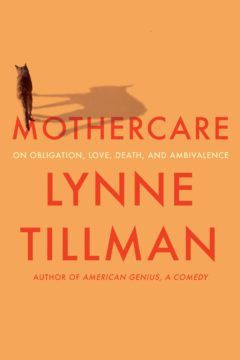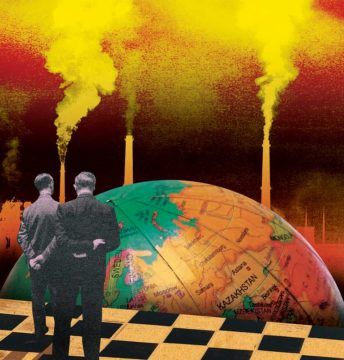 Gordon Peake and Miranda Forsyth in Aeon:
Gordon Peake and Miranda Forsyth in Aeon:
We live in Canberra and Washington, DC, two stately capital cities that embody all the trappings and the ethos of the bureaucratic state. With their monuments, statues and symmetrical lines, the architects of both cities dreamt them as manifestations of the rational administrations that would work there. Imposing government buildings are the dominant architectural feature of both places, rising like redwood plantation trees in a planned forest. Irrespective of the decade or the party in charge, policies and plans that emerge from these buildings have the hallmarks of a planned forest, too: ordered, consistent and ostensibly guided by clear rules.
In terms of their scale, size and administrative grandeur, Canberra and Washington, DC are as different as can be from another city where we have both spent time: little Buka Town, the tumbledown, sun-scorched capital of Bougainville, presently an autonomous region of Papua New Guinea (and possibly soon the world’s newest country, after a 2019 referendum on independence, in which 97.7 per cent of the population voted in favour). In Buka, there is no capacious national repository to store administrative documents: the Bougainville government’s archives are a rusty-red shipping container into which papers get chucked periodically.
Ironically, though, it was in Buka that we found ourselves constantly bumping into the ghost of Max Weber, considered the father of bureaucracy (although he himself might bristle at that designation).
More here.
 In the late afternoon of September 21, 2018, I exited my New York apartment building carrying a folding table and a big sign reading GRAMMAR TABLE. I crossed Broadway to a little park called Verdi Square, found a spot at the northern entrance to the Seventy-Second Street subway station, propped up my sign, and prepared to answer grammar questions from passersby.
In the late afternoon of September 21, 2018, I exited my New York apartment building carrying a folding table and a big sign reading GRAMMAR TABLE. I crossed Broadway to a little park called Verdi Square, found a spot at the northern entrance to the Seventy-Second Street subway station, propped up my sign, and prepared to answer grammar questions from passersby.
 INTERPRETING ANCIENT DNA
INTERPRETING ANCIENT DNA I remember all too well that day early in the pandemic when we first received the “stay at home” order. My attitude quickly shifted from feeling like I got a “snow day” to feeling like a bird in a cage. Being a person who is both extraverted by nature and not one who enjoys being told what to do, the transition was pretty rough.
I remember all too well that day early in the pandemic when we first received the “stay at home” order. My attitude quickly shifted from feeling like I got a “snow day” to feeling like a bird in a cage. Being a person who is both extraverted by nature and not one who enjoys being told what to do, the transition was pretty rough. “O
“O An injectable drug that protects people at high risk of HIV infection has been recommended for use by the World Health Organization (WHO). Cabotegravir (also known as CAB-LA), which is given every two months, was initially approved by the United States Food and Drug Administration in December 2021.
An injectable drug that protects people at high risk of HIV infection has been recommended for use by the World Health Organization (WHO). Cabotegravir (also known as CAB-LA), which is given every two months, was initially approved by the United States Food and Drug Administration in December 2021. Care work — tending to the sick, the very young or the very old — has long been denied the kind of recognition (and remuneration) that
Care work — tending to the sick, the very young or the very old — has long been denied the kind of recognition (and remuneration) that  Ever since ancient Uruk, the world’s first major city, founded around 4000
Ever since ancient Uruk, the world’s first major city, founded around 4000  Melinda Cooper in Phenomenal World:
Melinda Cooper in Phenomenal World: Thea Riofrancos in The Nation (illustration by Tim Robinson):
Thea Riofrancos in The Nation (illustration by Tim Robinson): Gordon Peake and Miranda Forsyth in Aeon:
Gordon Peake and Miranda Forsyth in Aeon: When my parents first told me I was going to Hindu camp, I was not happy. And, to be honest, I was more than a little scared. My parents claimed they knew what was best for me, vom. Most of my summer vacations were spent back in India with family, so it was almost a treat to be able to stay home for once. I’d miss swimming at Park N Pool, riding bikes to Dairy Queen and picnicking at Idlewild Park. Why would I want my perfect summer in the ‘burbs to be interrupted by some stupid camp where I wouldn’t know anyone? Would there be bears? And even more terrifying, would there be cute boys?
When my parents first told me I was going to Hindu camp, I was not happy. And, to be honest, I was more than a little scared. My parents claimed they knew what was best for me, vom. Most of my summer vacations were spent back in India with family, so it was almost a treat to be able to stay home for once. I’d miss swimming at Park N Pool, riding bikes to Dairy Queen and picnicking at Idlewild Park. Why would I want my perfect summer in the ‘burbs to be interrupted by some stupid camp where I wouldn’t know anyone? Would there be bears? And even more terrifying, would there be cute boys? Steven Preister’s house in Washington, D.C. is a piece of American history, a gorgeous 110-year-old colonial with wooden columns and a front porch, perfect for relaxing in the summer. But Preister, who has owned it for almost four decades, is deeply concerned about the environment, so in 2014 he added something very modern: solar panels. First, he mounted panels on the back of the house, and they worked nicely. Then he decided to add more on the front, facing the street, and applied to the city for a permit.
Steven Preister’s house in Washington, D.C. is a piece of American history, a gorgeous 110-year-old colonial with wooden columns and a front porch, perfect for relaxing in the summer. But Preister, who has owned it for almost four decades, is deeply concerned about the environment, so in 2014 he added something very modern: solar panels. First, he mounted panels on the back of the house, and they worked nicely. Then he decided to add more on the front, facing the street, and applied to the city for a permit. Marina Herlop
Marina Herlop His huge Technicolor paintings, draped without frames, crossed over into sculpture — tabernacles to fearlessness and radicality. Hung from the ceilings or tacked to the walls, they looked like canvas mountain ranges or gigantic tents and huts, marching cities on the plain.
His huge Technicolor paintings, draped without frames, crossed over into sculpture — tabernacles to fearlessness and radicality. Hung from the ceilings or tacked to the walls, they looked like canvas mountain ranges or gigantic tents and huts, marching cities on the plain.